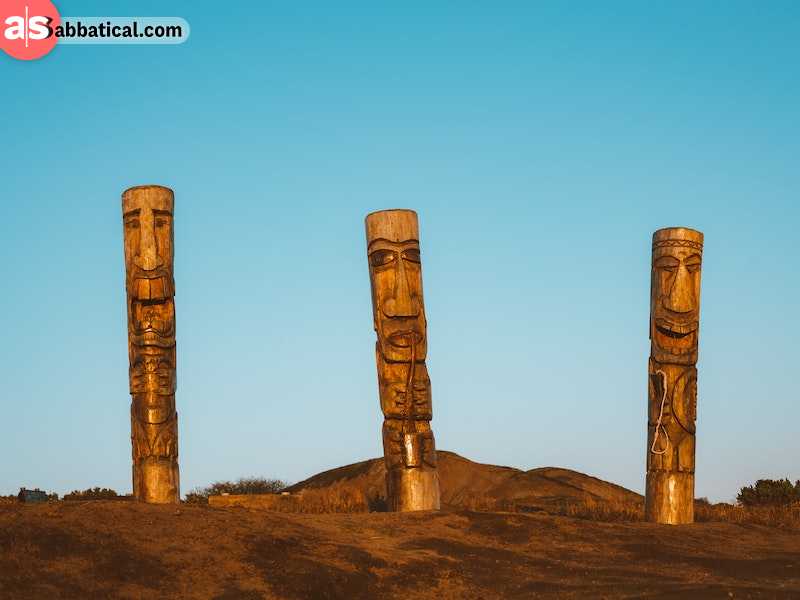6 Ancient Spiritual Traditions That Are Still Practiced Today
It's often said that “what’s old is new again.”
Well, in the case of some of the world’s oldest traditions, what’s ancient has remained ancient. And yet, many of these practices continue to manifest today much in the same form as they have for thousands of years.
Let’s look at some of those timeless traditions that have navigated uncounted centuries to remain viable and practiced by people today.
Sweat Lodges
In the United States, the sweat lodge ceremony of Native American tribes has survived the near cultural elimination of the indigenous people and has reemerged in recent years to become more popular than ever.
A sweat lodge ceremony involves groups of 10-20 participants who enter a small structure (usually a wigwam or “medicine house”) wherein an intense sauna-like steam bath is created.
Also called a “purification ceremony,” participants endure hours in steamy darkness as they seek detoxification of the body through sweat -– but the sweat lodge ceremony also has a huge mental and spiritual development component.
Note that the sweat lodge dates back thousands of years and is known to have been conducted not just by Native Americans, but also by other world cultures. For example, one of the earliest recorded sweat lodge ceremonies was conducted in about 500 B.C.E. by the Scythians.

Meditation
The ancient practice of meditation has enjoyed a remarkable resurgence in recent decades. Millions of people today have discovered the benefits of this ancient practice which can be traced back to at least 5,000 B.C.E., said a Psychology Today article.
Meditation is perhaps most associated with cultures and religions that emerged out of India , China
, China , and Tibet
, and Tibet , but even western cultures, such as those of the ancient Greeks, practiced some form of meditation.
, but even western cultures, such as those of the ancient Greeks, practiced some form of meditation.
Meditation can truly be said to be among the most timeless practices in an unbroken chain across the millennia. Today, meditation is not necessarily associated with a particular religion but is more so implemented within all walks of spiritual life coaching. Anyone can take up this method of self-improvement from a religious or secular approach.
Dream Practice
Another fascinating ancient art that has witnessed a renewal in recent years is dream practice. This includes lucid dreaming (a dream in which you know you are dreaming), dream analysis, dream healing, and creative dreaming, such as for the arts or just solving everyday problems.
The ancient monks of Tibet are perhaps the most associated with various techniques to leverage the dream experience as a vehicle for spiritual attainment. But let’s not forget the ancient Egyptians. Their culture and religions incorporated powerful dream enhancement techniques that served a variety of purposes. Native Americans were also keen on what their dreams revealed to them.
With the work of modern science and sleep lab research, lucid dreaming has surged in popularity. After Stanford University psychophysiologist Dr. Stephen LaBerge proved in a laboratory setting that lucid dreaming was "real" in the 1980s, interest in this practice took off in the U.S. and around the world.
Dr. LaBerge also developed specific techniques that anyone could use to induce their own lucid dreams.

Pagan Ceremonies and Practices
Various pagan practices are another area where ancient traditions have reemerged to new vitality in modern times. Perhaps one of the most common examples is the growing popularity of Wicca.
Wicca can be considered a form of ancient paganism that is also influenced by various and more modern forms of western esotericism. It’s often associated with “witchcraft” or “white magic,” but some adherents to Wicca maintain that equating Wicca to witchcraft is too simplistic.
It’s best to think of Wicca as a new form of paganism. Of course, pagan practices predate Judeo-Christian practices for thousands of years. Various forms of paganism date back to the Stone Age.
The observance of nature – especially celebrating the changes of seasons – is one central element of paganism. It’s interesting to note that during the summer solstice, thousands of modern-day pagans gather at Stonehenge near Wiltshire, England , to mark the event.
, to mark the event.
The ancient builders of Stonehenge configured the structure so that the sun strikes the Heel Stone precisely as the sun rises on the first day of summer.
Due to there being people still wanting to practice and learn Wicca, groups and companies such as Wicca Academy offer sessions to help those learn it in the traditional way.
Conclusion
What's fascinating about ancient traditions is how they have defied the concept of time itself. Their meaning, relevance, and importance have remained vital in the hearts, minds, and spiritual composure of millions of people around the globe for millennia.




